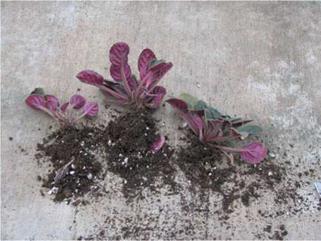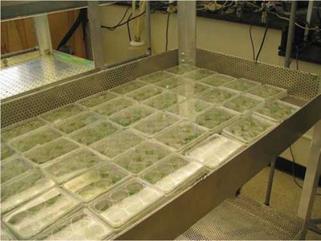No study of plant reproduction is complete without some discussion of how plants change and improve through the years. The essence of vegetative reproduction is that there is no change; that is, each new plant is exactly like the parent plant. Although this may be desirable in the short term, it would be detrimental in the long run if species were unable to change to respond to new environmental conditions. Such changes can only occur through sexual reproduction or spontaneous mutation. When the sexual reproduction process is controlled by the deliberate actions of human beings, plant breeding results and a specialized science, plant genetics, takes effect.
Plant genetics is a young science tracing its origin to Gregor Mendel, an Austrian, whose work with the common garden pea in 1865 began the understanding of how and why plants change. Weighty texts and entire university courses are devoted to the subject of genetics; it is not
![]()


figure 5-ю. The crown of an African violet is being divided into three parts. Each will develop into a new plant. (Delmar/Cengage Learning. Photo by Steven Newman)
figure 5-11. Tissue cultured implants of geranium and chrysanthemum (Delmar/Cengage Learning. Photo by Steven Newman)
the intent here to explain the intricacies of plant improvement. Rather, it is hoped that you will gain a basic understanding of a science and specialized technology integral to the long-term improvement of ornamentals and other crop plants.
The physiological activities of each cell, tissue, organ, and total plant are the result of biochemical reactions. These reactions are driven by enzymes that are synthesized from coded information carried on the chromosomes in each cell’s nucleus. Each enzymatic effect is controlled by an individual gene, the determiners of heredity located on the chromosomes. Genes are part of the deoxyribonucleic acid (DNA) portion of the chromosome. As the chromosome duplicates during meiosis, the genes and the DNA also duplicate. This duplication determines the transmission of hereditary features.



